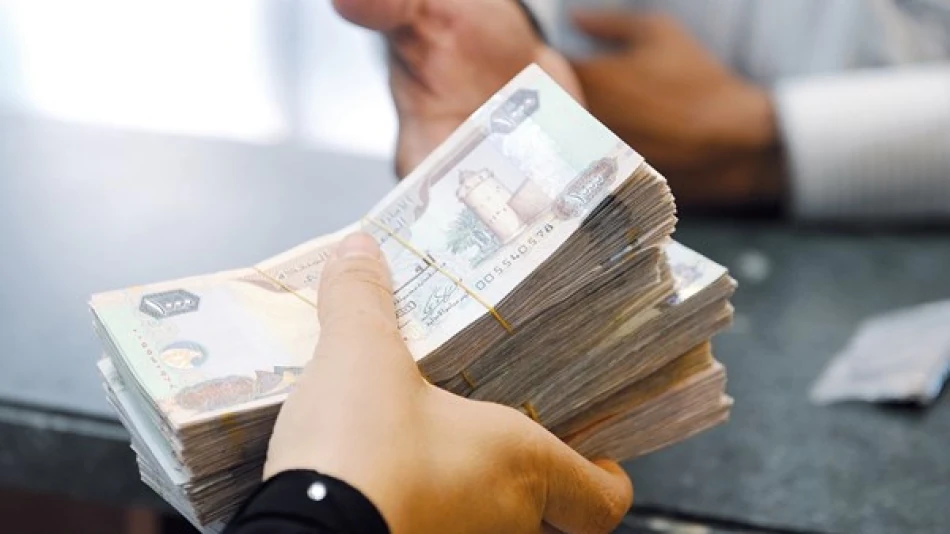
UAE Banking Sector Assets Reach 5.08 Trillion Dirhams in August
The UAE's banking sector showed steady growth in August, with total banking assets reaching 5.087 trillion dirhams, up 1.3% from July. This growth reflects continued economic activity and confidence in the country's financial system, driven by increased lending to both government and private sectors.
The Central Bank's latest monetary and banking developments report reveals that total credit jumped 2.2% month-on-month, adding 51.1 billion dirhams to reach 2.417 trillion dirhams by the end of August. This credit expansion came from two sources: domestic credit grew by 36.4 billion dirhams while foreign credit increased by 14.7 billion dirhams.
The domestic credit growth tells an interesting story about where money is flowing in the UAE economy. Government sector credit surged 9.5%, while private sector lending rose a more modest 1.2%. Non-bank financial institutions saw credit grow 7.3%. The only decline came from public sector entities linked to the government, which dropped 0.5%.
Bank deposits also climbed, rising 1.6% from 3.08 trillion dirhams in July to 3.128 trillion dirhams in August. Resident deposits drove this growth, increasing 1.8% to 2.871 trillion dirhams. This more than offset a 0.9% decline in non-resident deposits, which fell to 257.3 billion dirhams.
Within resident deposits, government deposits jumped 7.7%, showing strong public sector financial activity. Government-linked entities saw deposits rise 0.5%, private sector deposits grew 0.7%, and non-bank financial institutions posted a solid 6.5% increase.
Money supply indicators showed mixed results. The narrow money supply (M1) edged down 0.1% to 1.028 trillion dirhams, mainly due to slight decreases in cash circulation outside banks and demand deposits. But broader money measures expanded, with M2 growing 0.6% to 2.562 trillion dirhams and M3 jumping 1.9% to 3.079 trillion dirhams.
The M3 expansion came largely from the M2 growth plus a significant 41.3 billion dirham increase in government deposits. This suggests the government sector played a key role in August's monetary expansion.
The monetary base contracted 1.1% from 860 billion dirhams to 854.1 billion dirhams. This decline reflected reductions in banks' current accounts and overnight deposits at the Central Bank, which fell 54.2%. However, currency issuance and reserve accounts both increased.
The Central Bank's foreign assets grew slightly to 972.7 billion dirhams in August from 969 billion dirhams in July. These assets break down into 349.1 billion dirhams in bank balances and deposits abroad, 572.5 billion dirhams in foreign securities, and 48.4 billion dirhams in other foreign assets.
The Central Bank's total balance sheet expanded from 1.003 trillion dirhams in July to 1.007 trillion dirhams in August, reflecting the institution's growing role in supporting the UAE's financial system.
For investors and market watchers, these numbers suggest the UAE banking sector remains healthy with steady growth across most key metrics. The strong government deposit growth and increased lending activity point to continued economic momentum, while the diversified nature of credit growth shows broad-based financial activity rather than concentration in any single sector.
Most Viewed News

 Layla Al Mansoori
Layla Al Mansoori






